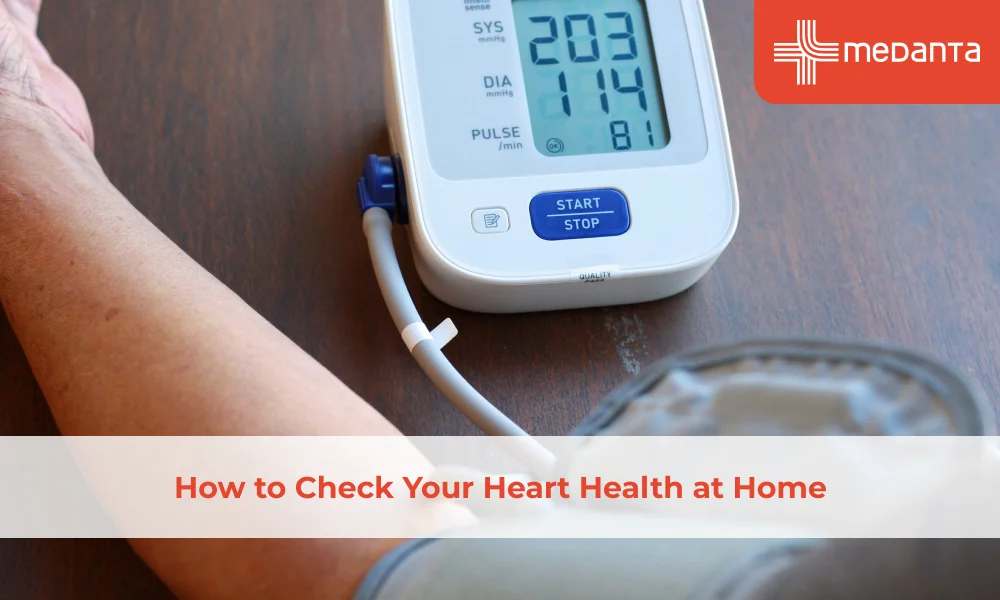How to Check Early Jaundice Symptoms at Home?

TABLE OF CONTENTS
Do you observe a sudden yellowish or pale appearance of your nails or eyes? Or, do you see it in an infant, you know? It can be a sign of jaundice which is a medical condition due to a liver disorder.
When red blood cells break down, they produce a yellowish-orange pigment called bilirubin. Normally, you excrete bilirubin following its passage through the liver. Jaundice disease can prevent the liver of affected individuals from doing it.
Jaundice can lead to serious health problems, but it is possible to check its early signs at home. Read on to learn more about jaundice, its symptoms, and how you can check its early symptoms at home.
What is Jaundice?
Jaundice is a medical condition that causes the skin or the white part of the eye to develop a yellowish tinge. Such a tinge may also be visible in the mucous membranes. The disease can also cause some changes to the body fluids. For instance, you may pass dark urine if you have jaundice.
A pigment called bilirubin is responsible for causing a yellowish tinge on the skin and other parts of the body (such as the whites of the eye) of an affected individual. It is either yellow or orange, and it generates in the body when red blood cells break.
Healthy individuals excrete it out of the body through the liver. Jaundice renders affected individuals incapable of doing so.
Three stages of Jaundice
Jaundice can affect you in three stages. At first, it may affect you before the production of bilirubin. Thereafter, it affects you during the production of the yellow-orange pigment. In the last or third stage, it affects you after the production of the pigment.
Here’s what causes jaundice in all three stages when the body generates bilirubin.
Before: jaundice may result due to the reabsorption of hemolytic anemia or a large hematoma
During: you may get jaundice disease at this stage due to several reasons. These include the use of anabolic steroids and certain other medications, consumption of alcohol, autoimmune diseases, metabolic defects associated with rare genetic reasons, infections due to viruses, and hepatitis (A, B, and C).
After: in the post-production stage of bilirubin, gall bladder inflammation, gallstones, pancreatic tumor, and gallbladder cancer are some conditions that may lead to jaundice in adults.
Apart from adults, babies are also vulnerable to the disease. In fact, they are more vulnerable to it as they do not have a fully developed liver. As such, parents and guardians must monitor their baby’s condition based on his/her jaundice symptoms if they think their baby may have the disease.

Common symptoms to look for to test jaundice at home (for both children and adults)
Babies and adults exhibit different symptoms of jaundice disease. The yellowish appearance of the skin and the whites of the eye are just two of its symptoms. The medical condition also has several other symptoms by which you can identify it.
Its prominent symptoms in infants include the following:
Orange/yellow skin color
Problems in waking up
Unusually high fussiness
Improper sleeping patterns
Limited urination
Poor feeding
Other than the above symptoms, also consider taking your baby to a doctor immediately if he/she exhibits the following symptoms:
Your baby has a floppy, limp, or stiff body
He/she cries at a higher pitch
He/she displays the unusual movement of eyes
If your baby’s body arches like a bow
Compared to children, adults exhibit distinctive symptoms of jaundice. These include the following:
Altered skin color (yellowish skin)
Chills and fever
Dark urine (urine with dark yellowish color)
Clay-colored stool
A sudden loss or reduction of body weight
Itchiness of the skin
Consider reaching out to your doctor immediately if you are an adult and your exhibit the following symptoms:
Sudden drowsiness
Tarry black stool
Blood in vomit or stool
Tenderness of the abdomen or extreme pain in it
Bleeding or bruising without any major injury
Why is it imperative to get medical advice for jaundice from a qualified healthcare professional?
Jaundice may have some underlying causes or factors. Knowing them in time is imperative for the treatment of the condition. Jaundice is an indicator of serious health problems, especially in adults. So, the quicker it is diagnosed, the better. A quick diagnosis of the medical condition can help you with a quick recovery from it.
What are some possible causes of jaundice?
Jaundice can be the outcome of several causes. While some of its causes are common, others can be rare. Broadly, one becomes a candidate for jaundice due to the following causes:
Cirrhosis
Malaria
Congenital disorders
Pancreatic cancer
Bile duct obstruction
Inflammation of the liver
A gastroenterologist is a specialist doctor who treats jaundice. See a qualified gastroenterologist for diagnosis and treatment upon displaying the symptoms of jaundice. A quicker diagnosis of jaundice is imperative as it helps initiate a timely treatment of the condition.
Takeaway
Jaundice in an infant or adult indicates the incapability of the liver cells to process bilirubin. It is imperative to treat the disease in its initial stage to prevent any damage to the body due to a high level of bilirubin. If you exhibit the above jaundice symptoms, reach out to a qualified gastroenterologist for proper diagnosis and treatment.


